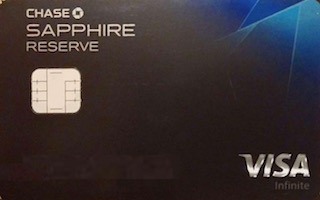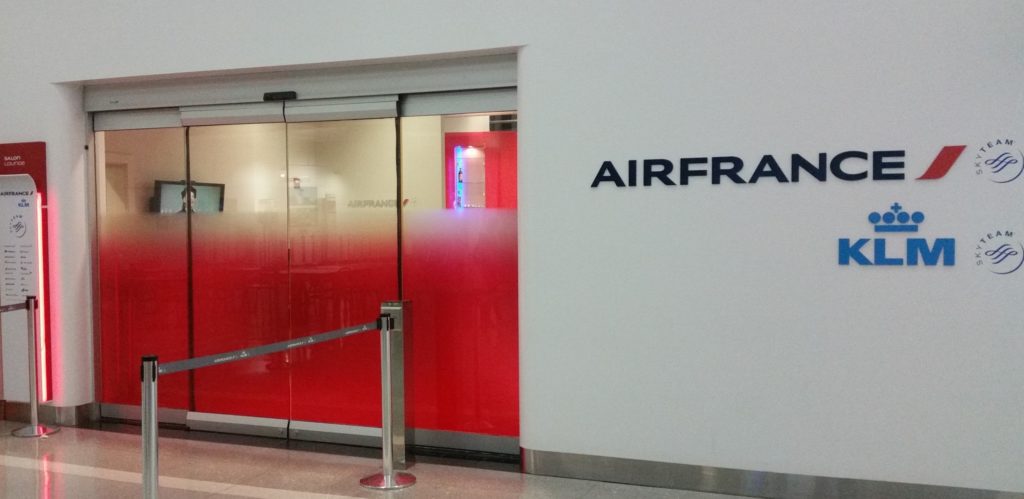It’s that time. Year one has nearly elapsed for the first to jump on the Chase Sapphire Reserve card in 2016. Now it’s time to decide whether the benefits and perks of this premium card outweigh its substantial annual fee of $450. When asking yourself, “should I pay the annual fee on my Chase Sapphire Reserve?”, here are a few things to consider:
- Am I using the card significantly for travel spend?
- Am I using the $300 travel credit for travel I otherwise would have paid cash?
- Will I continue to use the other perks at all (lounge access, Global Entry or Pre-Check reimbursement,
It’s definitely true that with a sign up bonus of 100,000 Ultimate Rewards points and the potential to get two $300 travel credits within the first 12 months made this card a no-brainer for people who were not sunk because of the infamous Chase “5/24 rule.” But do the benefits add up for subsequent years? Let’s take a look.
Is the Chase Sapphire Reserve worth keeping for the travel credit?
The Sapphire Reserve card has one of the most flexible and easiest to use travel credits in the premium card market. Rather than a credit to cover airline incidentals or airfare, the $300 credit covers basically anything that codes as travel. And it is applied automatically.
It’s so automatic that I forgot I was even using it a couple times. When my wife and visited Portland last Fall, I used the Reserve to buy TriMet tickets from the Portland airport to downtown. Turns out it codes as travel, and the credit was applied. Not exactly how I intended to use it…
In any case, if you pay at least $300 out of pocket each year for travel anyway, this drastically reduces the overall fee of the card. It is a logical fallacy to just subtract the $300 travel credit from the $450 annual fee and say that the annual fee is “only” $150, though the wide range of things that count as “travel” and the automatic nature of the CSR credit do make it a little closer than some of the other premium cards
[Chase Sapphire Reserve vs The Platinum Card® from American Express vs Citi Prestige® Card]
At the very best you are prepaying $300 in travel. I wouldn’t say the Chase Sapphire reserve is worth keeping for the travel credit alone, but the credit goes a long way in helping rationalize the $450 annual fee.
Is the Chase Sapphire Reserve card worth it for the 3x on travel spend?
If you spend a good chunk of change on paid travel (and dining) each year and primarily accrue points in the Ultimate Rewards program, keeping the card could be a no-brainer. Personally, I try to avoid paying out of pocket for the bulk of our travel expenses, so our total travel spend isn’t always that high. Even if a trip costs us a reasonable chunk of change, it is typically in terms of groceries and sightseeing. For example, I went to Australia in January for a week, and the trip only cost me $320 out of pocket, only about $167 of which would have coded as 3x on the Reserve (SEE: The Anatomy of a One Week Trip to Australia).
Comparing the return on travel spend of the Chase Sapphire Reserve to the Chase Sapphire Preferred will show you how much you need to spend on travel before the Chase Sapphire Reserve has essentially paid for itself. I’m going to assume that you spend at least $300 per year on paid travel, so subtracting the annual travel credit from the Reserve leaves us with a net annual fee of $150. This is $55 more than keeping the Sapphire Preferred. Using a conservative value of 1.5 cents per UR point (what you’d get through the UR portal using your Reserve), you’d have to spend $3,667 in travel before the card “pays for itself.”
This isn’t exactly a small sum to spend on travel, at least in my opinion. However, if you consistently get more than 1.5 cents per UR point, this number drops drastically. Say you redeem for a business class ticket at a value of 4 cents per point. Now you only need to spend $1,375 on the Reserve before it has paid for itself.
Ultimately, it’s up to you whether increased earning on travel is worth the $55 (or $150, if you wouldn’t hang onto a Sapphire Preferred). This is also a good baseline for determining the value of the rest of the card benefits.
What are the perks of the Chase Sapphire Reserve worth?
This is where things become a little less cut and dried. It is easy enough to put some reasonable cash value on the travel credit and return on spend, but assigning a value to the perks is a bit more difficult.
Consider the Priority Pass lounge access perk. The value here depends on how often you use the access, how much is “saves” you each visit, and/or what you would pay for Priority Pass if you didn’t have the Reserve card. Personally, I would pay $0 for a lounge membership. I don’t fly enough to make it close to worth it. Lounge access to me is only worth what it is truly saving me in food costs, so like maybe $10 per visit. So…considering that my Chase Sapphire Reserve lounge access has gotten me into one lounge (SEE: Aspire Lounge Calgary review), this is worth about $10 to me.
I don’t assign much of a cash value to some of the remaining perks. If you’ve already gotten the Global Entry or TSA pre-check credit, you won’t be able to get another one for 5 years, so this shouldn’t really factor into your decision now). Rental car privileges? Haven’t even looked them up. No foreign transaction fees? Lots of cards have this.
The greater insurance coverage, purchase and return protection, and lost luggage protection could be worth something, but it’s hard to assign a value to these.
So…should I pay the annual fee on my Chase Sapphire Reserve?
Short answer: yes (for me). But this assumes that I’m putting enough in travel spending on the card each year to and absolutely using the $300 credit. If I’d keep another Chase card with an annual fee anyway like the Sapphire Preferred of the Ink Preferred (answer is resoundingly yes), the remaining benefits plus extra points on travel spending is worth the additional $55.
If you don’t put a lot of travel spending on the card and hardly use the benefits of the card, but want to be able to use all the benefits of the Ultimate Rewards program, I would stick with the Chase Sapphire Preferred. It’s still the number one card I (and Dan) recommend to anyone who asks, “what should I get first?” (SEE: Why I keep recommending the Chase Sapphire Preferred for people starting out).
For those of you who hardly use the card beyond the travel credit, I might consider dropping it. Better yet, downgrade it to a Freedom or Freedom Unlimited.
The decision is ultimately up to you. Consider some of the evaluations in this post, and do the math on what the “fringe” benefits (i.e. lounge access) are actually worth (not the $399+ list price).
Opera House photo courtesy of Hai Linh Truong under CC 2.0 license.
This site is part of an affiliate sales network and receives compensation for sending traffic to partner sites, such as thepointsguy.com. This may impact how and where links appear on this site. Responses are not provided or commissioned by the bank advertiser. Some or all of the card offers that appear on the website are from advertisers and that compensation may impact on how and where card products appear on the site. Any opinions expressed in this post are my own, and have not been reviewed, approved, or endorsed by my advertising partners and I do not include all card companies, or all available card offers. Terms apply to American Express benefits and offers and other offers and benefits listed on this page. Enrollment may be required for select American Express benefits and offers. Visit americanexpress.com to learn more. Other links on this page may also pay me a commission - as always, thanks for your support if you use them





 Dan Miller travels with his wife and 6 (SIX!) children. He loves to help families travel for free / cheap, especially larger families. If you are looking for help, drop him an email at
Dan Miller travels with his wife and 6 (SIX!) children. He loves to help families travel for free / cheap, especially larger families. If you are looking for help, drop him an email at 
Why is it illogical to think of the CSR annual fee as effectively $150? Make a $300 refundable travel booking, get your travel credit, cancel the reservation, done.
It’s not **IF you would have $300 of paid travel** anyway. But if you have ways of avoiding even that $300…
Yes, you could cash out the credit, too.
David – I guess that’s one way to do it! I’m mostly thinking of people who have say a Citi Prestige and use the $250 credit to buy an airline gift card, counting that aginst the $450 annual fee. Then when they use that gift card to book a flight, they count THAT as “free” as well. That’s the fallacy IMO
It seems you focused most of your analysis on making up the additional $55 between the CSP and the net AF of the CSR in just the travel category, but I think everyone performing this analysis needs to also take into account the dining aspect. It’s one thing to say that people may have a difficult time spending $3,667 in travel annually to make up the difference and another thing to say that the $3,667 in spending difference can come from a combination of travel AND dining spend. I’m sure a lot more can justify the CSR when they factor their dining spend in along with their travel spend.
You’re talking to someone who averages *maybe* $50 in dining spend per month. But I do see your point.
And someone who averages even less than that 🙂
I went to Subway for lunch and used my CSR. It coded as dining, but the bill was $6. Triple dining points are nice, but not worth keeping the card. LOL
It makes sense for me with the savings I see in ‘free’ travel insurance. A couple of trips per year with my spouse and I recouped my fee.
great original post.
haven’t seen this subject covered yet, thanks for bringing it up
You know what I’d really like to see? I’d like to see someone do a side by side comparison of the CSR vs CSP, so we could simply go down the list of extra benefits and see if they are worth it. The one on the Chase site is pretty pathetic.
Since the CSP waives the AF the first year, I expect a lot of CSR holders will dump the CSR and go to the CSP.
Something like this? Chase Sapphire Reserve vs Chase Sapphire Preferred card
Although we easily get enough extra value out of the extra point on dining (enough that we switched without getting a sign up bonus), there is also the extra quarter cent on redemptions through the travel program. A redemption for 22,000 points would cover the $55 difference in fees. Admittedly, this is a double edged sword, as it tempts you to redeem them at 1.5 cents instead of transferring them for higher values through partners, but when you are earning them at 3-5 points per dollar, even 1.5 cents per point makes pretty good sense.
We take a couple cruises per year. Therefore, we do get the extra points value earned for the price we pay for the cruise, and associated stuff getting to the cruise. We also get pretty good travel insurance with the card. I use our Arrival card for other items I do not pay with the Reserve card. We will keep this card and drop the Ritz and downgrade the Amex Bus. Plat. to the Blue card.
BIG PLUS:
I like that for Car Rental insurance this card is ALWAYS PRIMARY Insurer whether in the USA or international. Usually Credit Cards are always SECONDARY in the USA and Primary for International. So if you have a claim in USA you have to go through your personal insurance first before Credit Card insurance will pay balance. With this card you do not have to go through your personal insurance first.
DOWNSIDE: Chase Travel books through EXPEDIA. Not good for hotels.